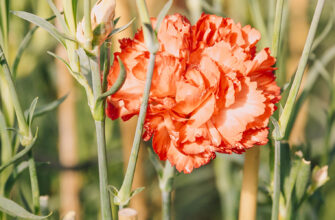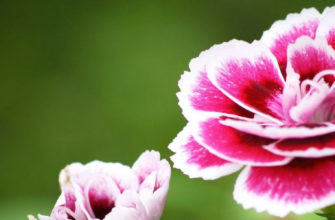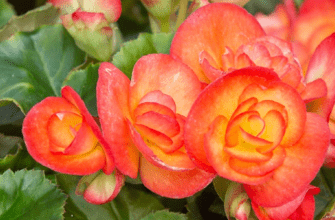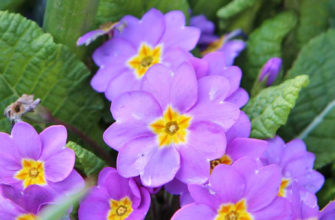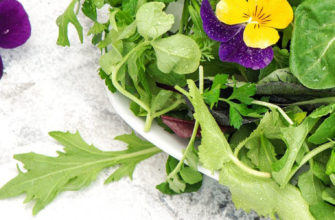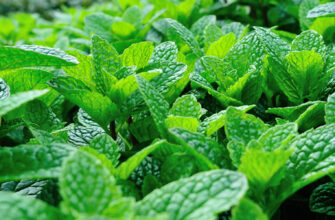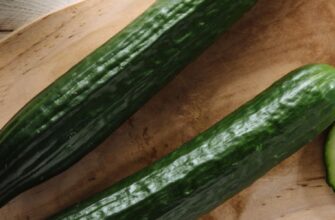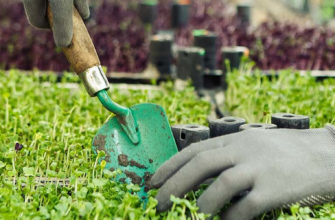Petunias are among the most popular annual flowers due to their long blooming period, vibrant colors, and diverse patterns. They bloom from spring until the first frost, adding charm to flowerbeds, borders, containers, and hanging baskets.
This article covers everything about growing petunias, caring for them, managing diseases and pests, and their uses in Ukraine and worldwide.
- Types of Petunias
- Grandiflora
- Multiflora
- Milliflora
- Cascading Petunias
- Trailing (Ampelous) Petunias
- Growing Petunias from Seedlings
- Sowing Seeds
- Eedling Care
- Choosing a Planting Location
- Planting Seedlings
- Direct Sowing in Open Ground
- Petunia Care
- Petunia Diseases
- Petunia Pests
- Allergens
- Cultural Consumption and Recipes
- Recipe: Petunia Salad
- Interesting Facts
Types of Petunias
Modern breeders have developed a wide variety of petunia hybrids, differing in size, shape, and color of flowers. The main groups are:
Grandiflora
Description: Large flowers (up to 10 cm in diameter), single or double. Suitable for containers, hanging baskets, and vertical arrangements (height 30-35 cm).
Popular Varieties and Hybrids: Gloria F1, Ultra F1, Sophistica F1, Bravo F1, Virtuoso, Frost F1, Aphrodite F1, Tango F1, Alba F1, Limbo F1, Pirouette F1, Valentina F1, Tanaka, Tritunia F1, Valentine F1, Kobayashi.
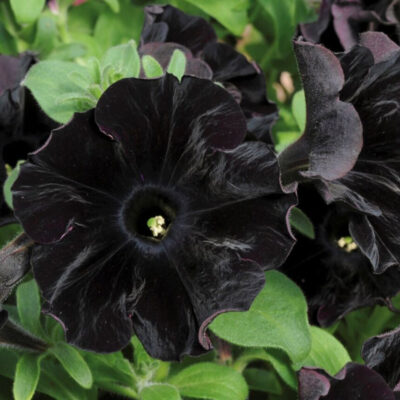
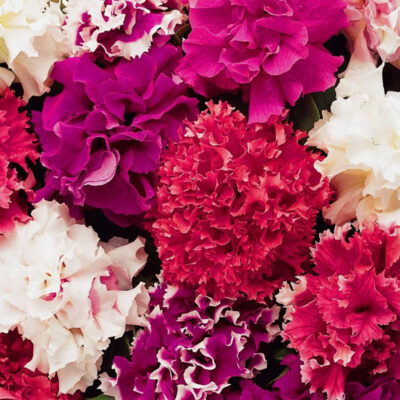
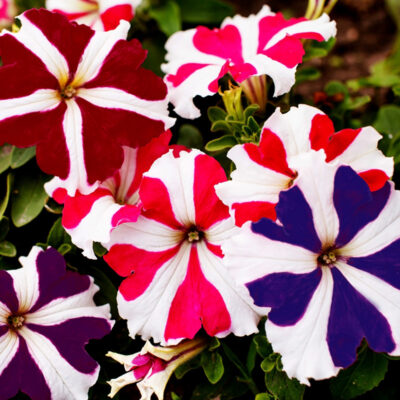
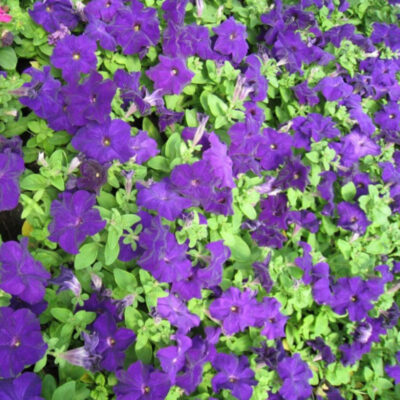
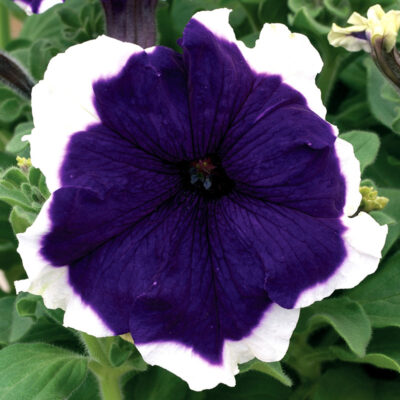
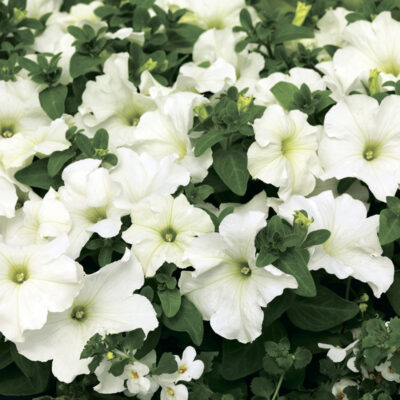
Multiflora
Description: Hardy petunias with smaller flowers but in greater numbers. Ideal for summer flowerbeds and borders.
Popular Varieties and Hybrids: Lambada F1, Mambo F1, Mirage F1, Duo F1, Brigitte F1, Andrea F1, Berenika F1, Alderman, Velvet Rose F1, Celebrity F1, Picotee F2, Angelica F1, Debonair F1, Ingrid F1.
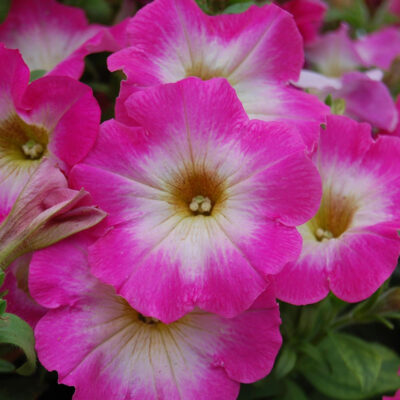
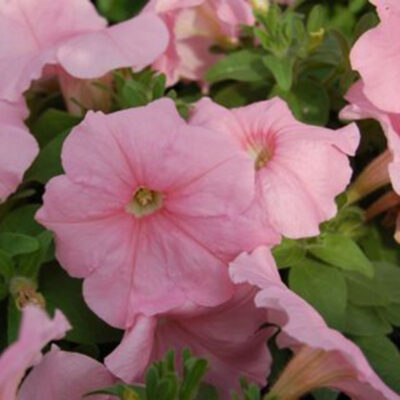
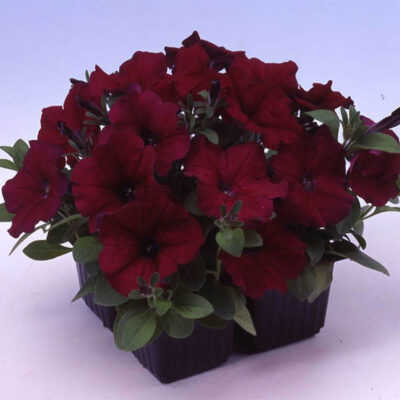
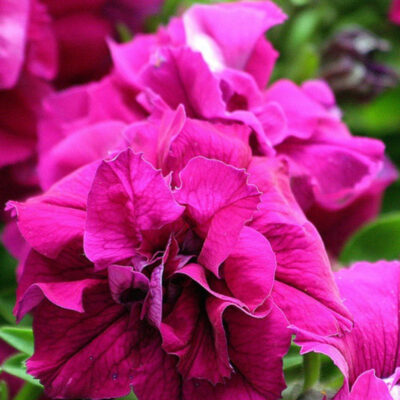
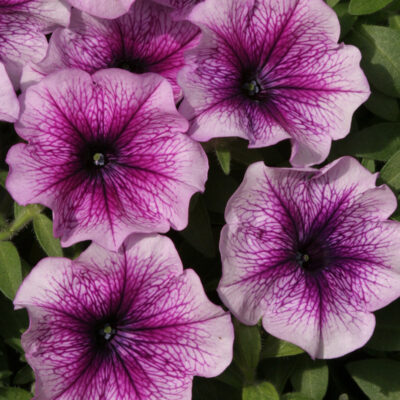
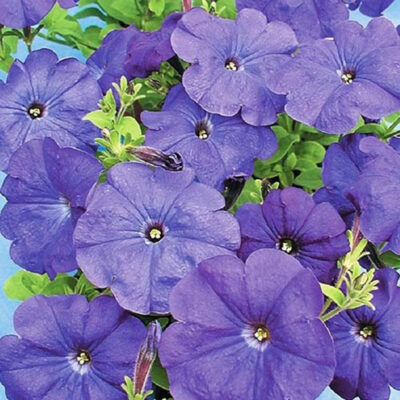
Milliflora
Description: Small flowers (2-4 cm), but plants are densely covered with blooms. Perfect for flowerbeds, borders, and mixed container plantings.
Popular Varieties and Hybrids: Picobella F1, Flashforward F1.
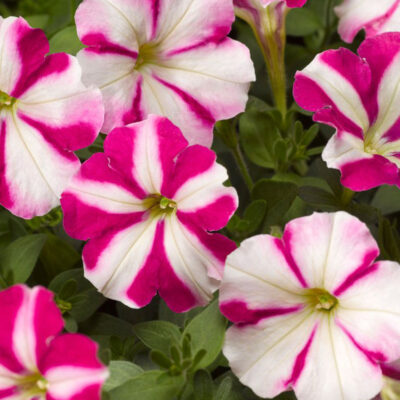
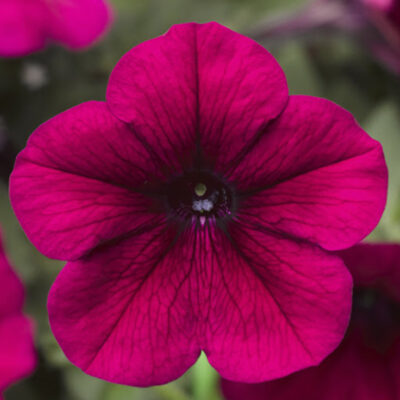
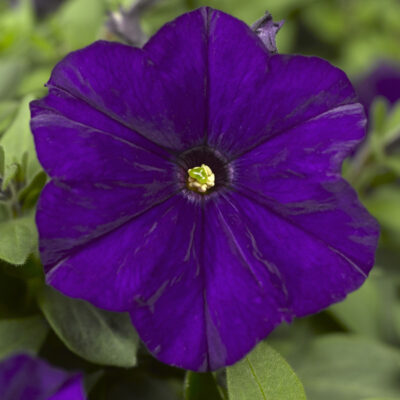
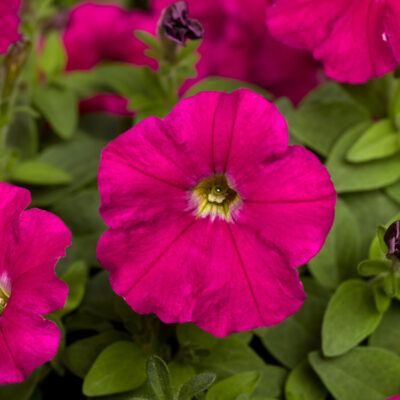
Cascading Petunias
Description: Low-growing (90-120 cm), forming colorful ground cover. Look stunning in hanging baskets.
Popular Varieties and Hybrids: Ramblin F1, Samba F1, Unilux F1, Fortuna F1.
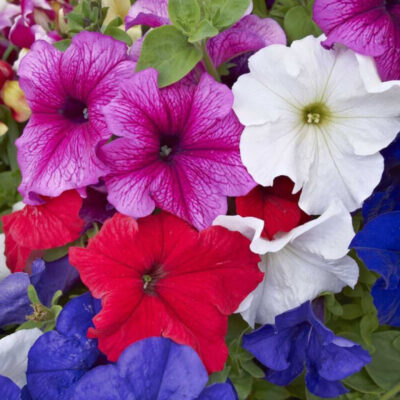
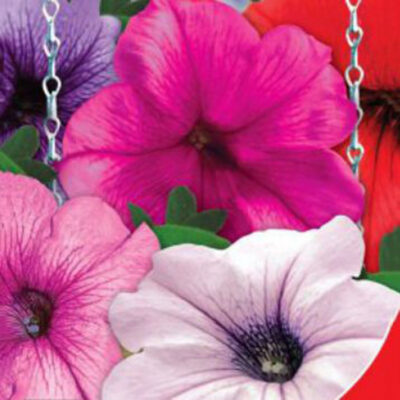
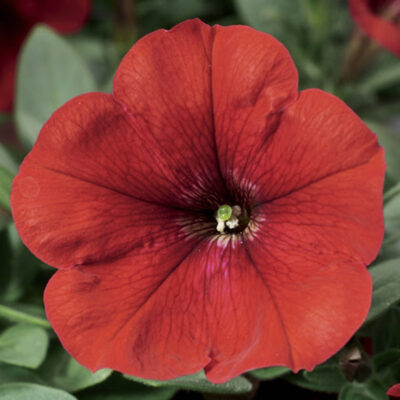
Trailing (Ampelous) Petunias
Description: Bell-shaped flowers (3-10 cm) with shoots 30-120 cm long. Ideal for hanging containers.
Popular Varieties and Hybrids: Avalanche F1, Diamond Purple F1, Velvet Salmon Shades F1, Tidal Wave F1, Easy Wave F1, Goddess F1, Velvet F1, Extra F1, Shock Wave F1.
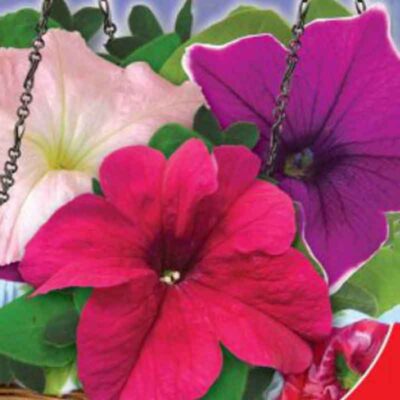
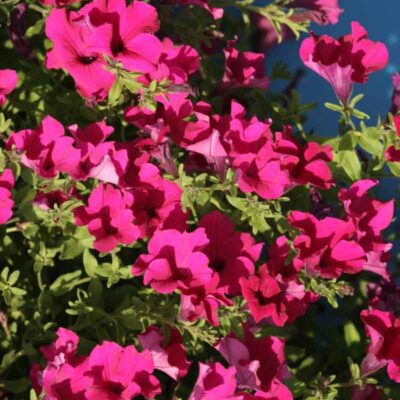
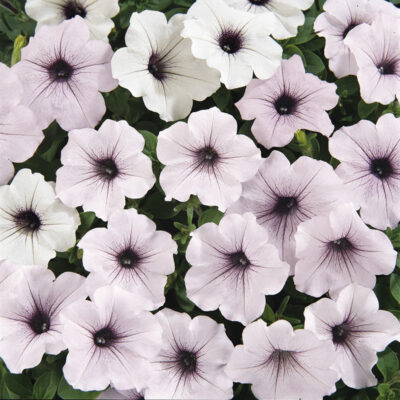
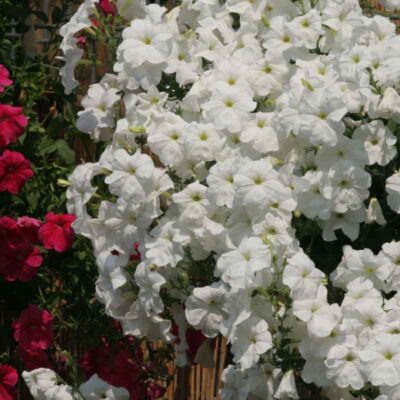
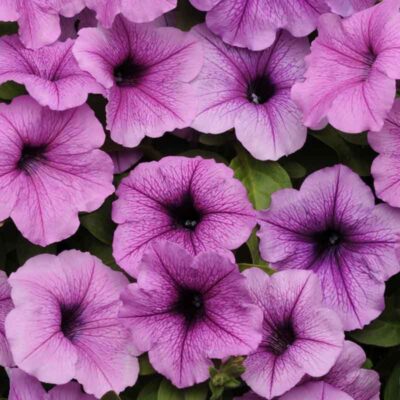
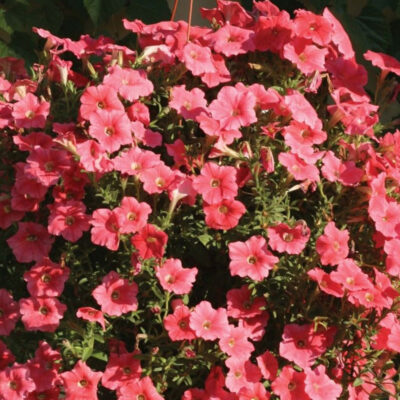
Growing Petunias from Seedlings
Sowing Seeds
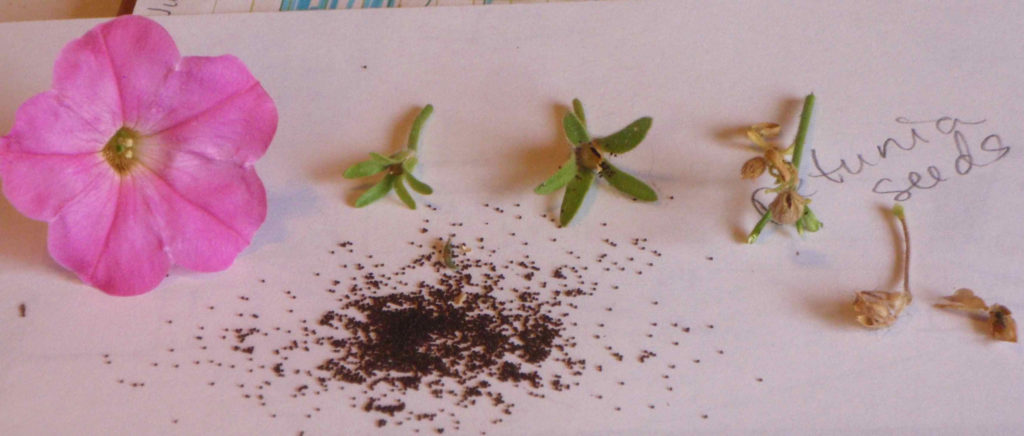
Petunia seeds are tiny, making them challenging even for experienced gardeners. Use pelleted seeds or mix with sand for easier sowing. Sow 10-12 weeks before planting in open ground (February-March in Ukraine):
- Spread seeds evenly over moist peat-based substrate in trays or containers.
- Gently press seeds into the soil without covering them.
- Water with a spray bottle to avoid washing away seeds.
- Cover the container with a plastic lid or film and keep at +20…+25°C, away from direct sunlight.
- Ventilate daily by removing the cover and maintain moisture.
Seedlings emerge in 7-10 days. Afterward, move the container to a cooler spot (+18°C during the day, +12…+18°C at night) and provide 16-18 hours of light using fluorescent lamps.
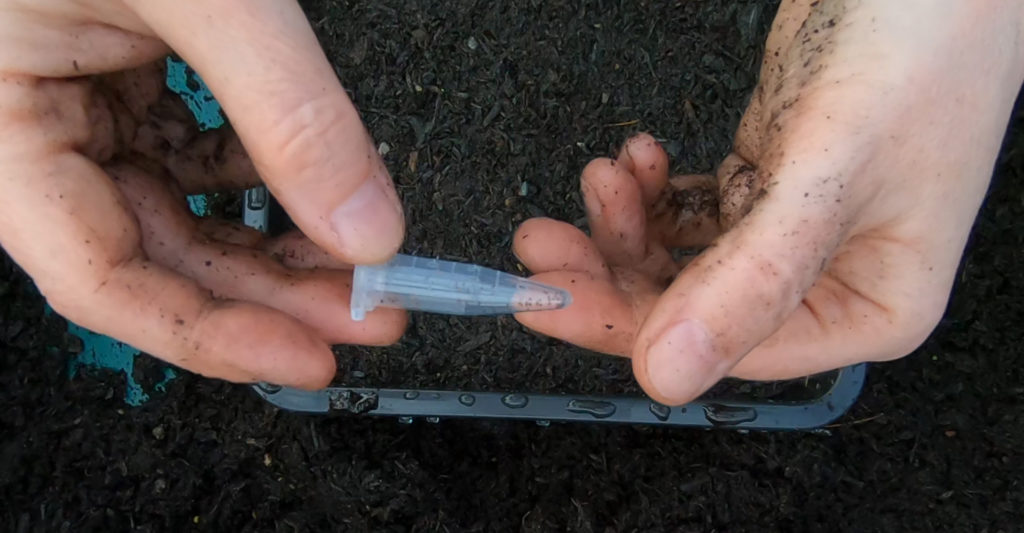
Eedling Care
- Transplanting: When seedlings develop 3 true leaves, transplant them into cassettes or pots.
- Feeding: Start fertilizing with liquid fertilizers every 2 weeks. Avoid getting fertilizer on leaves to prevent burns.
- Hardening Off: A week before planting outdoors, take seedlings outside during the day and bring them back indoors at night.
Choosing a Planting Location
Petunias require sunny locations with at least 5-6 hours of sunlight daily. They bloom poorly in shade. The soil should be well-drained; add compost or manure to improve drainage. Avoid windy areas to prevent stem breakage. For apartment growing, place petunias on sunny balconies in boxes or hanging pots.
Planting Seedlings
Plant seedlings in open ground when the soil reaches +15°C (mid-May in Ukraine):
Water thoroughly after planting.
- Grandiflora and Multiflora: Space plants 25-30 cm apart.
- Milliflora: 10-15 cm apart.
- Cascading and Trailing Petunias: 45 cm apart.
In containers, use a light flower-specific potting mix, planting 3-5 plants per pot for lush blooming.
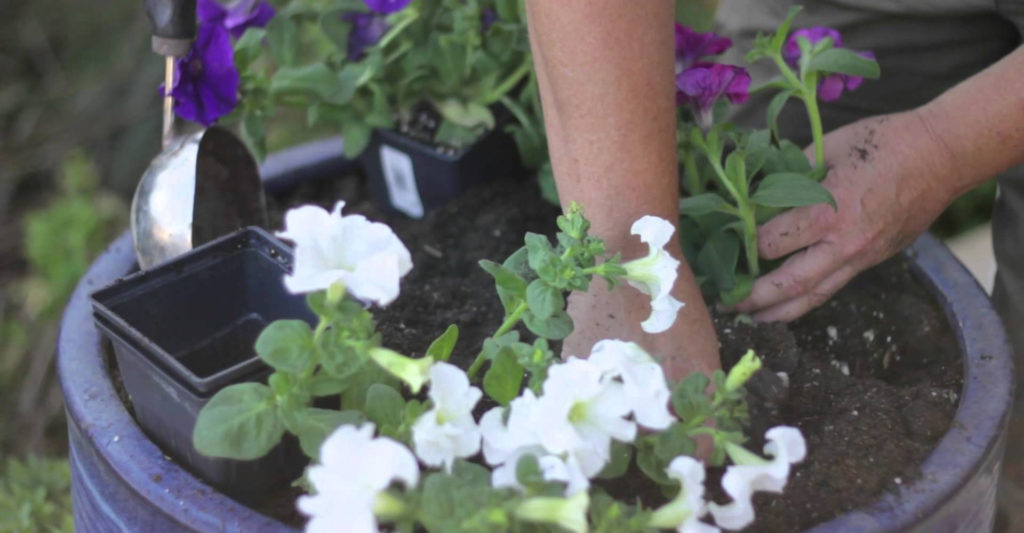
Direct Sowing in Open Ground
Petunias can be sown directly in the ground in late April to early May:
- Loosen and water the soil thoroughly.
- Sow seeds on the surface and water with a spray bottle.
- Cover with transparent film or white agrofibre, ventilating daily.
- Seedlings appear in 7-12 days at +23-25°C. Once plants have 3-4 true leaves, thin them to 25-45 cm apart.
- Apply nitrogen fertilizers for growth and phosphorus-potassium fertilizers (e.g., monopotassium phosphate) for blooming.
Petunia Care
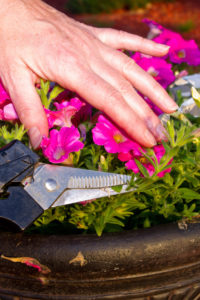
Watering: 1-2 times per week. Trailing petunias in containers may need daily watering in hot weather.
Mulching: Use shredded leaves or bark to retain moisture and suppress weeds.
Feeding: Fertilize 1-2 times per month; container plants require weekly feeding.
Pruning: In mid-summer, trim long stems by half to encourage branching. For older plants, cut back to 5-10 cm from the base. Fertilize and water after pruning.
Deadheading: Regularly remove faded flowers to maintain blooming.
Petunia Diseases
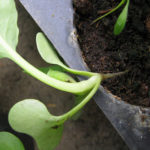
Black Leg: Darkening of the stem base. Prevention: Sterilize soil with potassium permanganate (3 g per 10 L water) or use sterile peat tablets. Treatment: Remove affected plants, treat with Bordeaux mixture or Fitosporin.
Gray Mold: Gray coating on leaves and buds. Treatment: Remove affected plants, treat with Skor or Maxim.
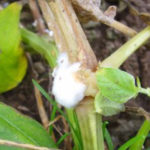
White Mold: Brown spots with white coating. Treatment: Fitosporin, Maxim.
Phytophthora: Browning of stems. Prevention: Avoid dense planting; treat with Ridomil Gold.
Brown Spot: Brown spots with a light center. Treatment: Copper oxychloride.
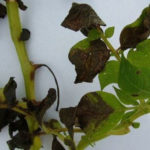
Powdery Mildew: White coating on leaves. Treatment: Garlic infusion (30 g per 1 L water), Skor, Topaz.
EU Pesticide Disclaimer: In EU countries, the use of pesticides like Ridomil Gold, Aktara, and Fufanon is strictly regulated due to their environmental and health impacts. For example, Fufanon (malathion) is banned in many EU countries. Always check the registration status of pesticides in your country. For organic growing, use biological products like Fitosporin or Bordeaux mixture, adhering to EU regulations.
Petunia Pests
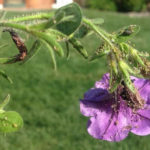
Slugs: Leaf damage. Treatment: Use beer traps or scatter superphosphate.
Aphids: Yellow, curled leaves. Treatment: Wash with water, use garlic infusion, or apply Aktara, Confidor Maxi (if permitted in the EU).
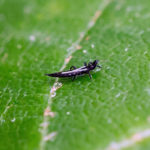
Whitefly: Yellow spots, leaf curling. Treatment: Wash with soap solution (1:6), use sticky traps, or apply Mospilan, Aktara (if permitted).
Thrips: Yellow spots, silvery leaves. Treatment: Fitoverm, Aktara.
Spider Mites: Yellow dots, webbing. Treatment: Fitoverm, Actellic 500 (if permitted).
Allergens
Petunias belong to the Solanaceae family, which includes tomatoes, potatoes, and tobacco. Their pollen may cause allergic reactions (rhinitis, watery eyes, skin irritation) in sensitive individuals. Allergen Code: Solanaceae (s1-s5, depending on the region). Wear gloves when handling and avoid inhaling pollen.
Cultural Consumption and Recipes
In some countries, petunias are used in culinary arts as a decorative element. In France and Mexico, their petals are added to salads and desserts for vibrant color.
Recipe: Petunia Salad
- Ingredients: Arugula (50 g), cucumber (1), cherry tomatoes (100 g), petunia petals (10-15), olive oil (2 tbsp), lemon juice (1 tbsp).
- Preparation: Combine arugula, sliced cucumber, and halved cherry tomatoes. Add washed, pesticide-free petunia petals. Dress with olive oil and lemon juice.
Note: Use only organically grown flowers.
Interesting Facts
- Petunias originate from South America, discovered in Argentina and Brazil in the 18th century. The name “petunia” comes from the indigenous word “petun,” meaning “tobacco,” due to leaf similarity.
- Modern F1 hybrids, developed in the 20th century, are weather-resistant and prolific bloomers.
- Petunia flowers are edible and used to garnish dishes in fine dining.
- Petunias have a light fragrance that intensifies in the evening, making them popular for relaxation gardens.
- In landscaping, petunias are often paired with pelargoniums and lobelias for vibrant displays.
Growing petunias is an enjoyable activity that brings joy with their vibrant blooms. Share your experiences and photos of your favorite petunias in the comments!
If you have found a spelling error, please, notify us by selecting that text and pressing Ctrl+Enter.

